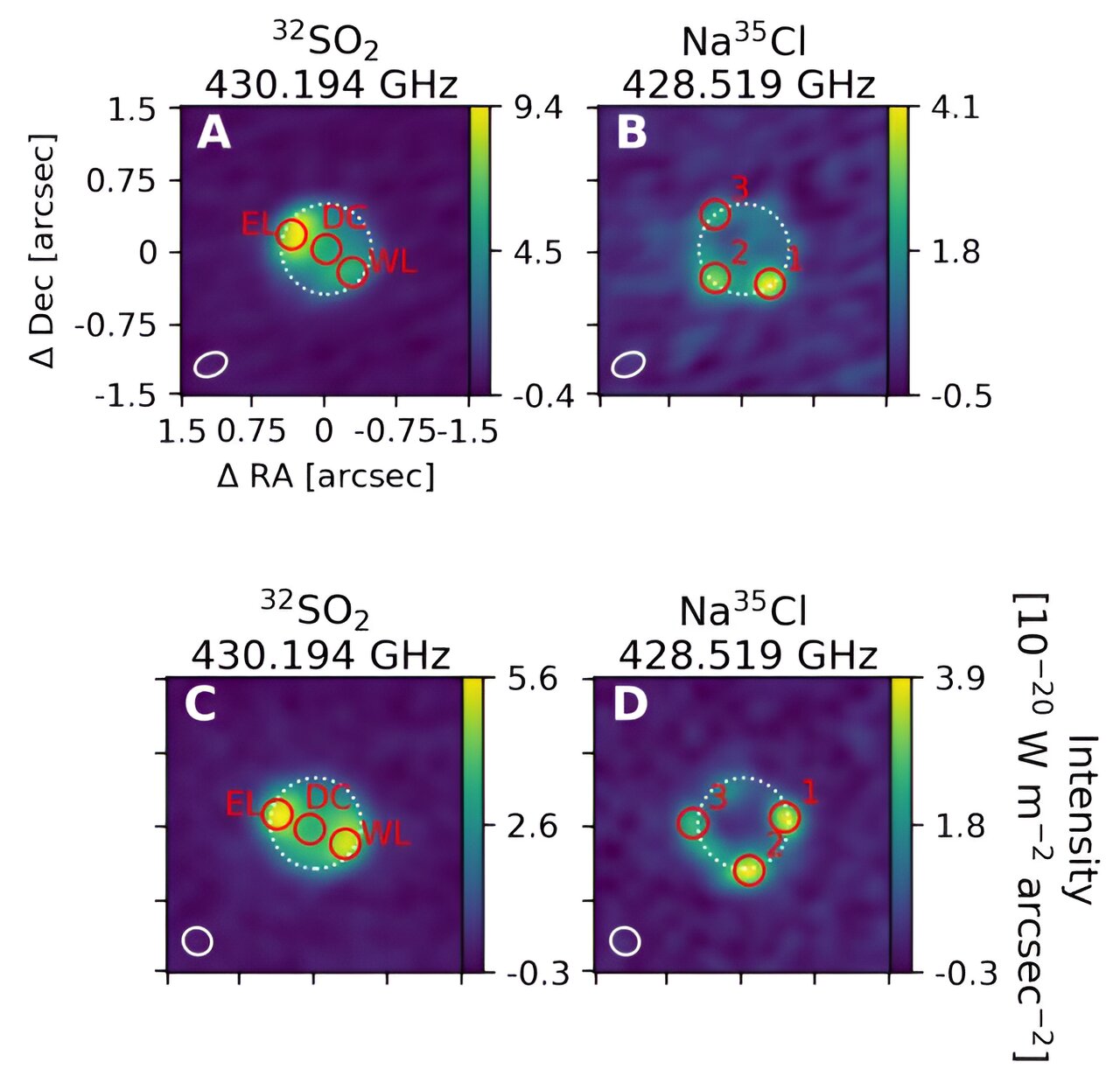Recent studies have revealed that the solar system is estimated to be around 4.5 billion years old, with Io, one of Jupiter’s moons, being the most volcanically active celestial body in the system. However, the duration of Io’s volcanic activity has remained a mystery until now. Researchers utilized data from ALMA to examine the gases present in Io’s atmosphere to uncover this information.
The volcanic activity on Io is a result of the gravitational forces exerted by Jupiter, Ganymede, and Europa, causing a buildup of pressure underground that leads to volcanic eruptions. These continuous eruptions have resulted in a constant flow of lava on the moon’s surface, constantly altering its geography and making it challenging to study its history.
The team focused on ALMA data related to chlorine molecules and stable sulfur isotopic ratios. They discovered that these elements were more abundant in Io’s atmosphere compared to other planets and moons in the solar system. Additionally, they found that a significant percentage of sulfur isotopes released into the atmosphere during volcanic eruptions are lost to space. This evidence suggests that Io’s volcanic activity has been ongoing for the entire duration of its existence, approximately 4.5 billion years.
Future research will delve deeper into Io’s history to determine if the moon experienced a cooler period initially that was disrupted by continuous volcanic activity. The team also aims to investigate the possibility of an ice crust or ocean on Io.
2024-04-21 02:00:03
Source from phys.org
